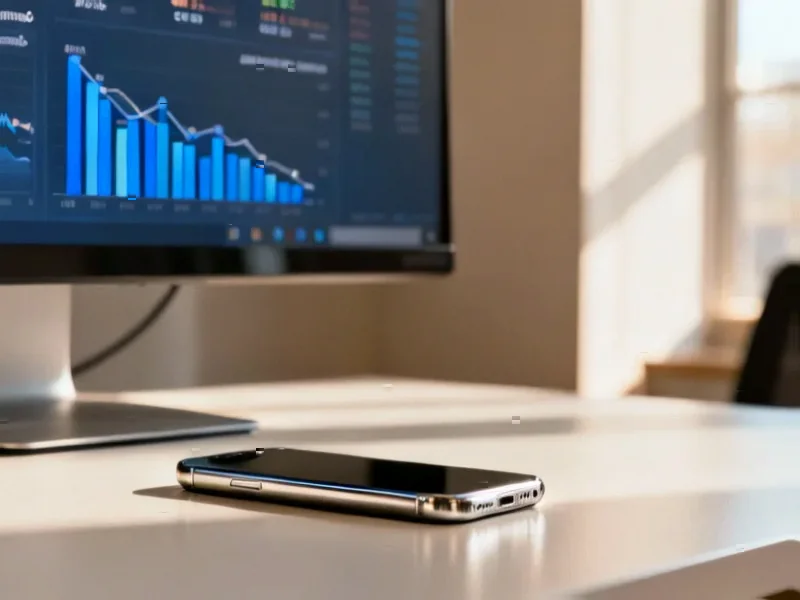According to Thurrott.com, Apple reported record September quarter revenues of $102.5 billion, representing an 8 percent year-over-year increase, with net income surging 86 percent to $27.5 billion. The company’s quarterly results announcement highlighted iPhone revenues of $49 billion (up 6 percent) and Services reaching an all-time record of $28.8 billion (up 13 percent). CEO Tim Cook described it as an “extraordinary lineup of products” heading into the holiday season, though the company declined to provide specific performance data for the new iPhone Air model. While these numbers appear strong on the surface, they reveal deeper strategic shifts that warrant closer examination.
Table of Contents
The Services Acceleration Strategy
What’s most telling in these results isn’t the headline revenue figure but the underlying composition. Services now represents over 28% of Apple’s total revenue, growing at more than double the rate of iPhone sales. This isn’t accidental—it reflects a deliberate strategic pivot that Cook has been engineering for years. The higher-margin Services business, including App Store, Apple Music, iCloud, and Apple TV+, provides more predictable recurring revenue that’s less dependent on the volatile hardware upgrade cycle. More importantly, it creates ecosystem lock-in that makes switching away from Apple devices increasingly difficult for consumers. The 13% Services growth suggests this strategy is working, but it also raises questions about whether Apple can maintain this momentum as regulatory pressures mount globally.
iPhone’s Diminishing Dominance
The iPhone’s 6% growth, while positive, actually represents a concerning trend when viewed in context. As Apple’s flagship product responsible for nearly half of total revenue, the iPhone is showing signs of maturation that should worry investors. The fact that it “missed expectations slightly” despite a new product launch suggests either market saturation or increased competition is taking its toll. More troubling is Apple’s refusal to disclose model mix or specific performance data for new models—this opacity often indicates the company has something to hide. With smartphone innovation plateauing and replacement cycles lengthening, Apple’s dependence on iPhone revenue creates significant vulnerability, especially as the company predicts “double-digit growth” in the current quarter without clear drivers for such optimism.
The Profitability Paradox
The staggering 86% increase in net income compared to 8% revenue growth reveals Apple’s mastery of margin optimization, but it also highlights a potential growth problem. Such disproportionate profit expansion suggests either significant cost-cutting or pricing power that may not be sustainable. While investors typically celebrate profit growth, this divergence between top-line and bottom-line performance indicates Apple may be extracting maximum value from existing customers rather than expanding its customer base. This approach works until it doesn’t—eventually, even loyal customers reach their price sensitivity limits, particularly in challenging economic environments.
Long-Term Strategic Implications
Looking beyond the quarterly numbers, Apple faces several strategic crossroads. The slight declines in iPad and Wearables categories suggest these product lines may have peaked, raising questions about where future growth will originate. More fundamentally, Apple’s success as a technology giant increasingly depends on navigating regulatory challenges, particularly around its Services business and App Store practices. The company’s traditional hardware-centric identity is evolving into something more complex—part device maker, part service provider, part platform operator. This transition creates both opportunities and vulnerabilities that will test Cook’s leadership in ways the smartphone era never did.
The Changing Competitive Landscape
Apple’s results must be viewed against a backdrop of intensifying competition across all its business segments. In smartphones, Chinese manufacturers are making significant inroads in emerging markets while offering comparable technology at lower price points. In services, every major tech company from Google to Amazon to Microsoft is building competing ecosystems. And in wearables, new health-focused devices from specialized companies threaten Apple’s dominance. The company’s decision to withhold specific model performance data suggests it’s feeling this competitive pressure more than it wants to admit. As the holiday quarter approaches, Apple will need more than “extraordinary” products—it will need to demonstrate it can innovate beyond incremental improvements to existing product lines.



